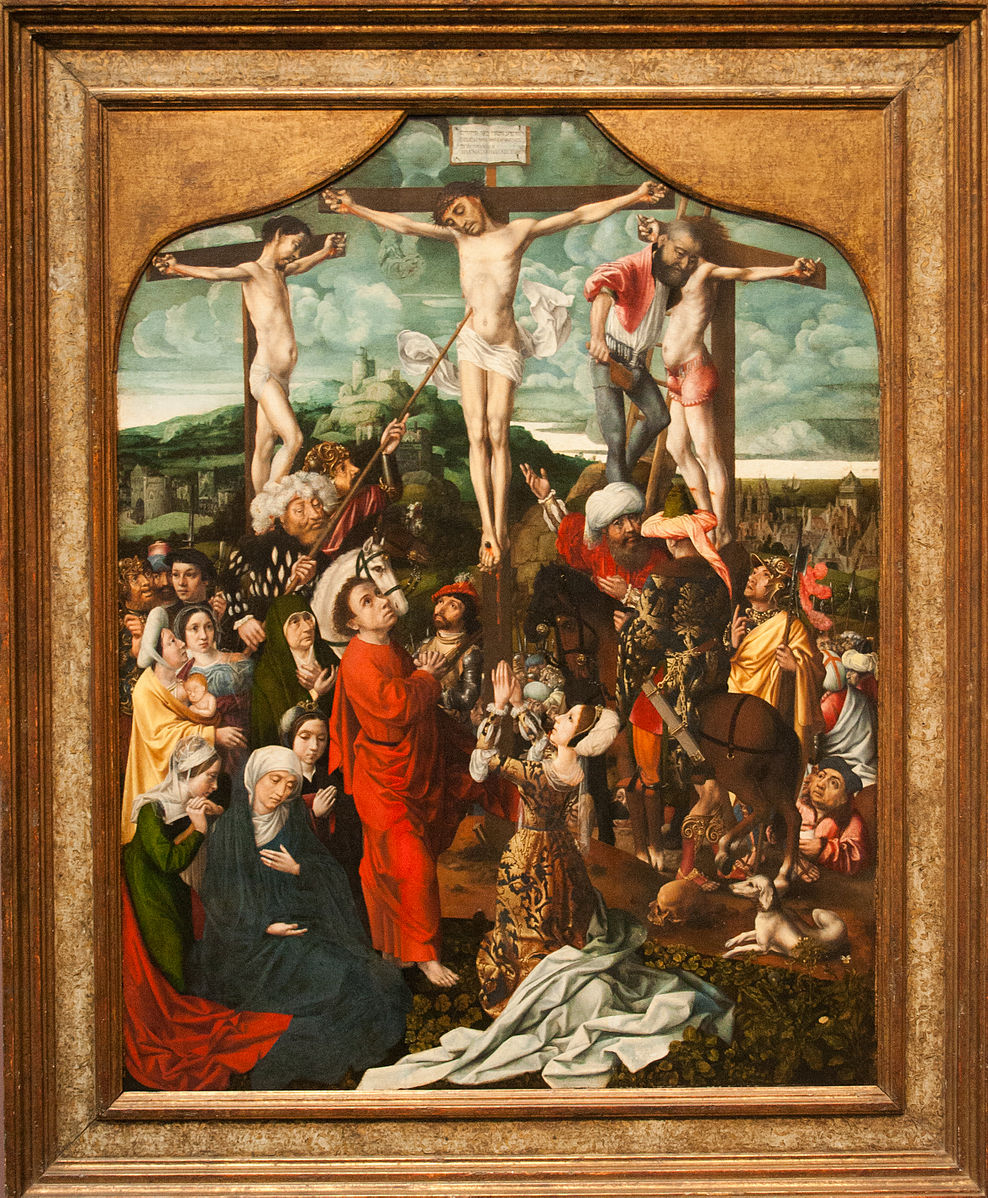After Mass this morning, I was reflecting on the Gospel and the death of John the Baptist.
29 When his disciples heard of it, they came and took his body and laid it in a tomb. (Mk 6:29, ESVCE)
Herod seemed to have some fixation on John the Baptist, invoking both fear and perhaps a grudging respect for him as a holy man. Many prophets experienced what that kind of grudging respect leads to. Such rulers could admire fearfulness in telling the truth, as long as it was not directly towards them. When news of his death was spread, John’s disciples came to claim the beheaded body, to be laid into a tomb. His disciples might have been worried about the repercussions of this regarding being disciples of a man who had raised the ire of Herodias. Yet they came, and this reminded me of Jesus’ disciples and that day at Calvary.
I remember, some years ago, a caller asked Jimmy Akin on Catholic Answers Live about Luke 23:49.
In Luke 23:49, it refers to “all these acquaintances and women” watching the crucifixion. Were the apostles included in that group of acquaintances? Time mark: 06:29
Jimmy had replied that this was the inference that they were there. He talks about why this is likely, and the Christian art has done us some disservice in showing only the women and the beloved disciples at Calvary. He states that this is not specifically what the Gospels say. Since then, I have heard him reference this at other times.
For me, this opens up the scene of Jesus’ crucifixion and death more. It has been common to think of all the other disciples slinking off after Jesus’ arrest. To think of a much smaller stage with Jesus, the two thieves, Mary, John, the other women disciples, and the detractors mocking Jesus. This is a scene with a hyper-focus by the Gospel writers on what salvation history has led to, and God’s love for us that drove Jesus’ sacrifice. Not a blow by blow account and census regarding everyone who was there and their reactions.
Peter, after Jesus’ arrest, makes his way to the courtyard to at the minimum get news of what was happening. It was certainly not Peter’s finest day in denying him three times, but he was there. When the cock crowed, and he realized what his denial meant, he wept. Did these tears and his sorrow at his betrayal just lead him to go somewhere else for a while? To think that the impetuous Peter, would not have found his way to Calvary after such sorrow?
I am also thinking about the Apostle Thomas, who had been aware of the danger Jesus was in and their own danger. “Let us also go, that we may die with Him” (John 11:16) How would Thomas having witnessed the death of Jesus play a part in his denial of Jesus’ resurrection. It might be one thing to hear reports of Jesus’ death and then hear reports of his resurrection. It is quite another to have experienced the manner of his death and what led up to it.
I also think of James, the brother of John. St. James becomes the first Apostle to be martyred. That only one of the “Sons of Thunder” would be present there is of course possible, but I like to think it to be more fruitful to think about his presence there. We don’t know with any kind of certainty how many apostles and other disciples were there that day, other than the persons specifically stated.
In my imagination, I can see the apostles and other disciples keeping their distance from the cross. Not wanting to be noticed by others and not wanting to intrude on Mary and the others directly with Jesus. That some of them might have grouped together to commiserate stayed apart to not draw attention. Regardless, they would not have been just stoic observers. This scene and the resurrection appearances seem to me to be tied together regarding their subsequent witness to the truth.

